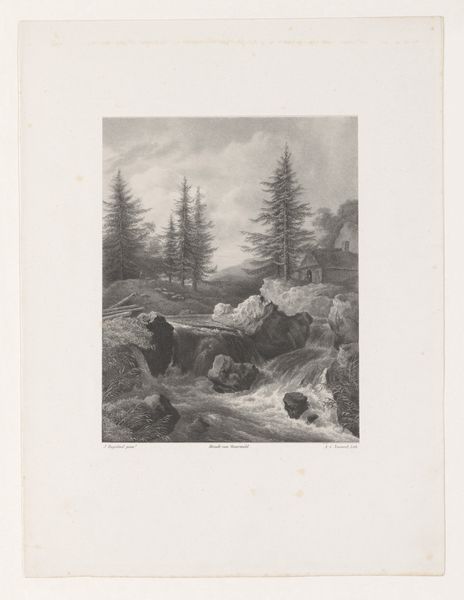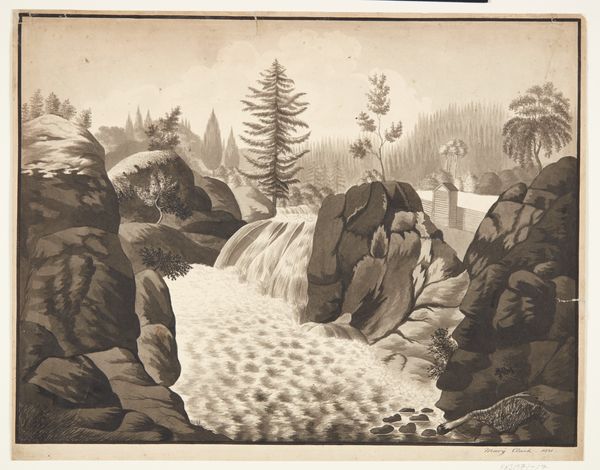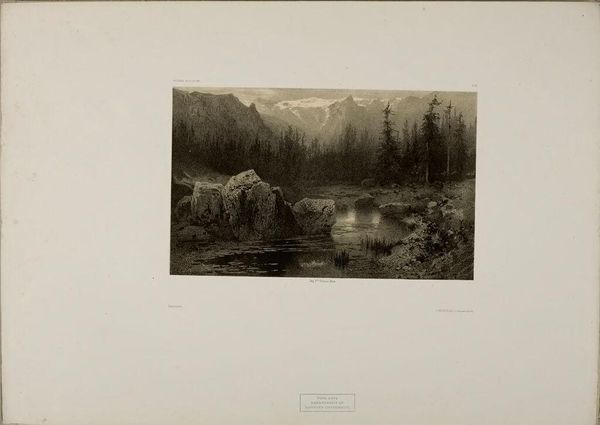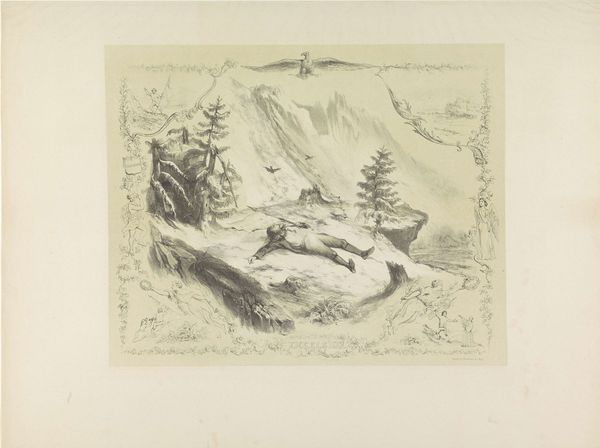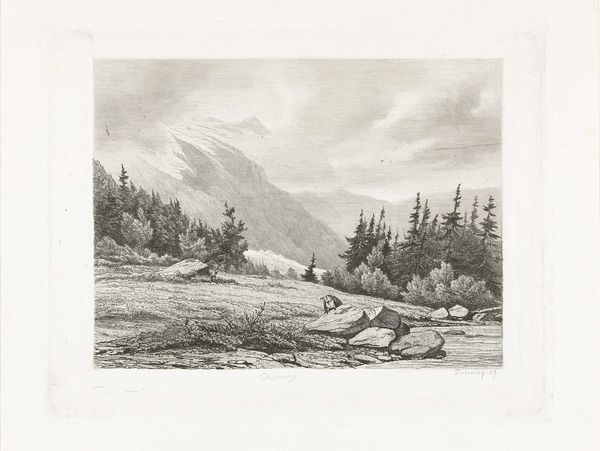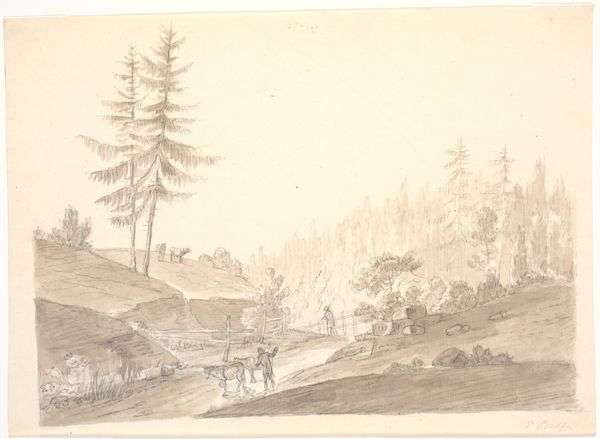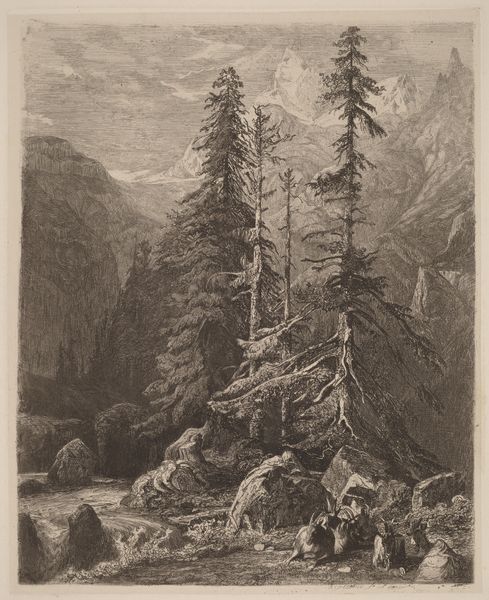
drawing, lithograph, print, paper
#
drawing
#
lithograph
# print
#
landscape
#
paper
#
romanticism
Dimensions: 285 × 410 mm (image); 368 × 540 mm (sheet)
Copyright: Public Domain
Curator: This is James Duffield Harding's "Larch, from The Park and the Forest," a lithograph on paper created in 1841. Editor: Immediately, I'm struck by the drama of the scene. The stark contrast between light and shadow, the gnarled trees, the hint of mountains in the distance – it’s almost unsettling. There's a strong sense of the sublime here, nature's power and indifference to human concerns. Curator: Harding was working within the Romantic tradition, so that pursuit of the sublime makes sense. Artists like him were turning away from industrialization, towards a more idealized vision of nature as a spiritual source. And the park in the title? Not necessarily an urban park as we’d imagine it, but often a more vast, natural landscape, one owned and managed often by landed gentry and shaped by particular social and political forces related to land use. Editor: You can see that in the way the trees are arranged, almost staged. And then you've got the mountains suggesting a scale that dwarfs the small animals down below – some kind of goats, it seems? There’s an implied power dynamic there, the human presence rendered tiny by the grandeur of nature. Was there any attempt to represent rural laborers, people who were truly embedded in these spaces, and who probably resented or even resisted elite control? Curator: Precisely, the conspicuous absence of workers in the image raises critical questions. Whose nature is this? It highlights the ways in which access to, and representation of, landscapes has been historically uneven. Harding's art becomes entangled with the politics of the era. Editor: So, it’s about understanding the broader context: the enclosures of common land, the rise of landscape painting as a genre consumed by the elite, the societal forces at play when the lithograph would've been viewed. All inform our interpretation. Curator: Exactly. It moves us beyond a purely aesthetic appreciation of the artwork. I’m especially captivated now thinking about what’s intentionally revealed but also what’s left hidden in Harding’s forest. Editor: Yes, this work becomes more engaging by thinking about both art and society’s interconnectedness at the time this print was created.
Comments
No comments
Be the first to comment and join the conversation on the ultimate creative platform.




